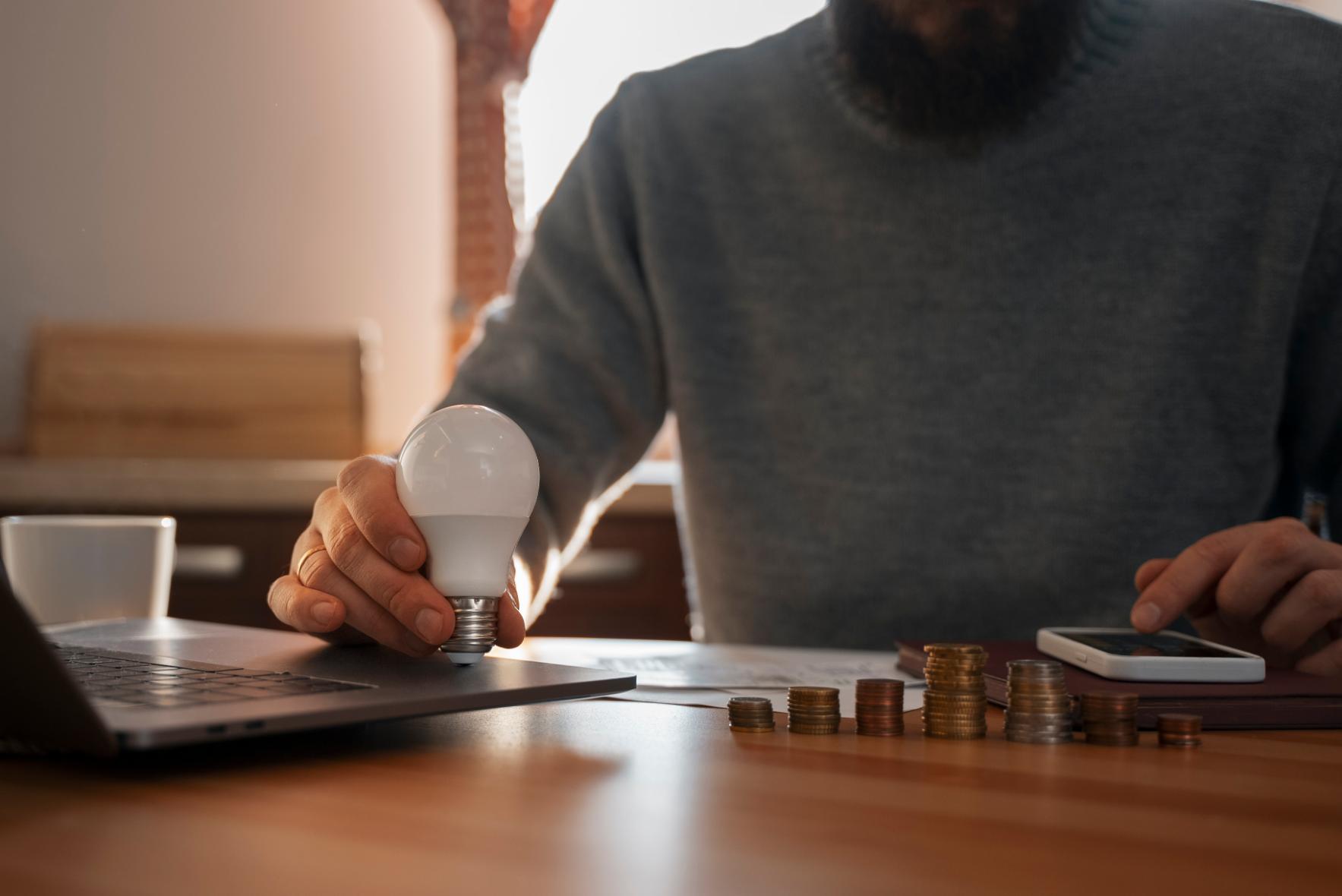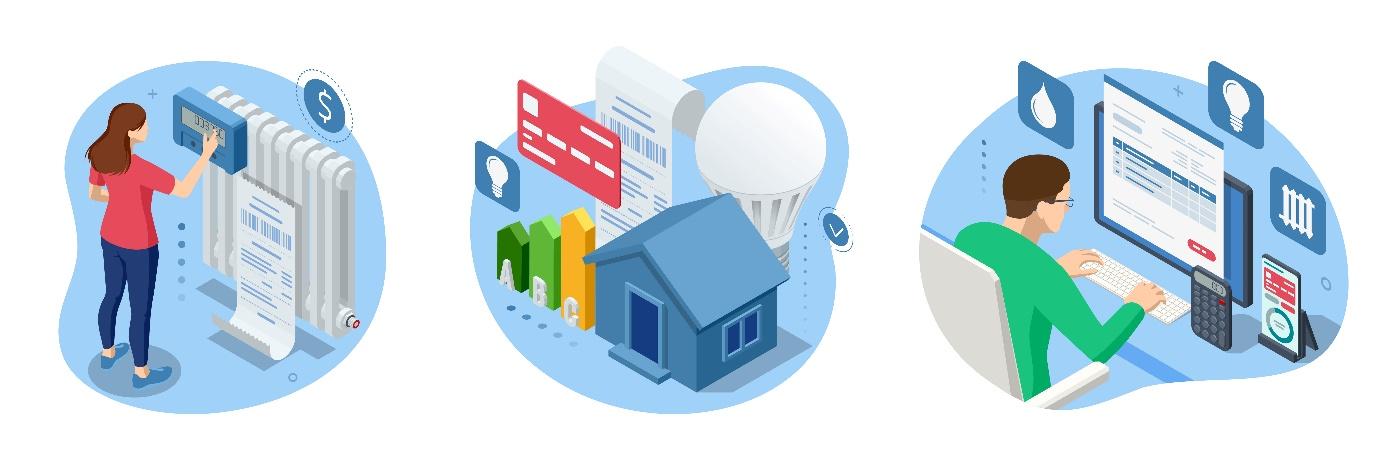WFHers (Work From Home-ers). There are a lot of us in Australia these days, and we’re using a lot of energy! Since workplaces and workers were forced into our homes during the pandemic, we’ve spent the last 2 years learning to love it. So much so that for many businesses, work-from-home arrangements are here to stay.
There’s a lot to enjoy about working from home; valuable hours gained without a commute, dollars saved on work clothes, extra sleep each morning, and lots of peace and quiet to name just a few. But, you may have already guessed it, there’s a downside. Now we’re paying for the energy that our offices used to foot the bill for!
Of course, there are tax deductions you can take advantage of to offset the extra utility bills, but there are also some easy ways that you can cut down on energy consumption and avoid the big bills in the first place.
Please read on and enjoy our top tips for WFH-ers:
Top Tip #1: Personal Temperature Control (PTC)
Working in an environment that is too hot or too cold has been proven to impact productivity (we all remember the dreaded, icy office air-con!), so it’s important to stay at a comfortable temperature while you’re working. But before you reach for the air conditioner remote, think about your personal temperature control first. Are you wearing a t-shirt in the middle of winter? Or your cozy pyjamas in January? You could save a surprising amount on heating and cooling costs simply by dressing for the season. Yes, it goes against the WFH principle of staying in activewear 24/7, but there will be dollars saved, so it’s worth it!
In Australia, heating and cooling make up an average of 40% of household energy consumption (yourhome.gov.au), which can be up to $600 a year on air conditioning alone (choice.com.au). Making strategic choices about how and when you use your air conditioning can drastically reduce your costs. Consider when your house feels the heat the most, and try to limit cooling to those times. Similarly, if your house is freezing in the morning, but thaws out by lunchtime, try popping a warm sweater on for the afternoon, rather than running the heating all day.
Top Tip #2: Choose the right climate

In addition to dressing for the occasion, make sure you’re setting your system to the right temperature. While it’s tempting to blast the room with an icy cold 18°C in the middle of summer, the reality is that every degree under 24°C uses 5% more energy. Similarly, when you’re heating your home, stick to 18-20°C. Every degree over uses about 10% more energy. If those temperatures just aren’t working for you, try adjusting your clothing or your position in the room (moving away from windows can help) to make yourself more comfortable without adding to your bill.
This leads to our next tip….
Top Tip #3: Don’t heat or cool the whole house

Bigger houses use up more energy to heat and cool, so a simple and effective way to reduce your energy consumption is to box off areas of your home and only control the temperature in the areas you’re using. For an added bit of luxury, try using the timer function on your split-cycle or ducted air conditioners so you can ‘prepare’ spaces for the time of day you’ll use them.
For example, if you work in a home office, consider setting the timer to start cooling your living room at the time you finish work, so you don’t have to sweat it out on the couch while you wait for the air con to kick in. Or set your bedroom to start warming up 15 minutes before bed in the winter months, rather than keeping the room warm all day. Using this simple trick means you can make a big difference in your energy use, without sacrificing any of your home comforts.
Top Tip #4: Turn everything off with the right powerboard

You’ve probably heard about the importance of turning off your power sockets to conserve energy use, and people talk about it for a reason! Appliances in active-standby mode use 5 to 10 times more electricity than passive-standby mode, which could be costing you upwards of $100 per year for the electricity you’re not even using!
To take the thinking out of powering down your home office, use an energy-saving powerboard. You might find these in the shops as Master/Slave powerboards. Depending on the number of sockets you need on your board, you’ll pay around $40, but with potential savings of over $100, it’s worth the upfront investment.
To use your powerboard effectively, make your computer the ‘master’ and then plug your other office gadgets, including monitors, chargers, lamps, and printers, into the slave sockets. Now you’re set up, all you have to do at the end of the day is turn off your computer at the master socket and the rest of your office will power down for the night, so you can rest easy knowing you’re not racking up charges while you sleep.
Top Tip #5: Stop paying more for your plan
When was the last time you reviewed your energy plan? If it wasn’t in the last 12 months, then chances are you’re paying more than you need to. There are many retailers in the market, all vying to provide you with your energy, which means there is always a new deal or bundle to be taken advantage of.
Retailers also offer varying rates for on and off-peak usage and seasonal rates, for things like running a swimming pool. Plus if you have solar panels, the feed-in tariffs from each retailer can vary widely, so it is important to shop around and make sure you have a plan that suits your household’s energy consumption patterns.
With so many options available, we’re all guilty of putting off the change until we have enough time to wade through the options, so it’s a good idea to engage the experts to do the hard work for you. Comparison companies, like CheapBills, have already done the research to come up with a selection of the best plans available, and they can discuss your energy usage to match you with the best plan. And the best bit is, not only does it save you time and money on your bills, but it’s a completely free service. There’s no obligation to switch, so there’s nothing to lose! Enter your details here or call 1300 786 045 to see if you could be saving money.
So, if you’re reading this from home, don’t put it off another minute! Follow our easy tips to save hundreds on your energy. Here’s a quick recap:
- Personal temperature control – dress for the weather!
- Choose the right temperature.
- Only heat the spaces you need.
- Use a master/slave energy board to power down.
- Review your bills with CheapBills to make sure you’re getting the best deal.
Happy savings!








